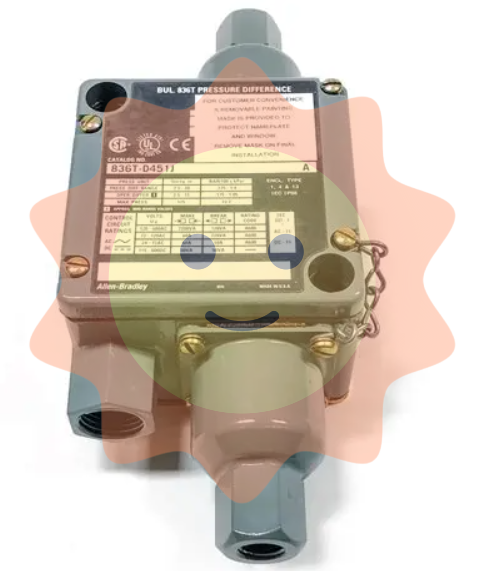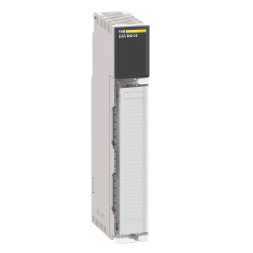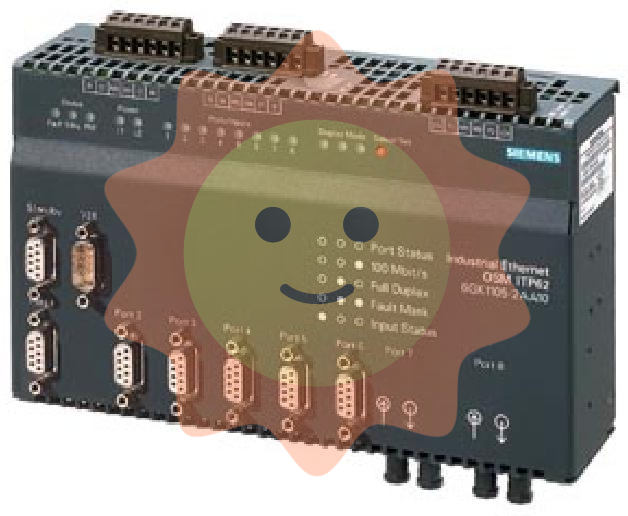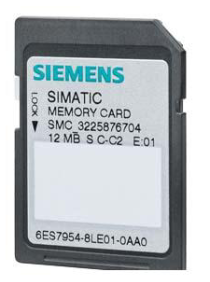In the architecture of medium voltage distribution systems, REM620A_F protection relays bear the core responsibility of "fault diagnosis and rapid disposal", connecting power equipment with higher-level control systems, monitoring key operating parameters such as voltage, current, and power in real time. When abnormal situations such as overcurrent, short circuit, overload, and grounding faults are detected, they can issue a trip command within milliseconds to cut off the faulty power supply, avoid permanent damage to equipment caused by fault expansion, and reduce the impact on other areas of the power grid.
Its application value is concentrated in three dimensions: firstly, ensuring equipment safety, minimizing damage to expensive equipment such as transformers and motors through precise fault identification and rapid protection actions; The second is to maintain the stability of the power grid, avoid local faults causing grid oscillations or large-scale power outages, and improve the power supply reliability of the distribution system; The third is to assist intelligent operation and maintenance, by uploading equipment operation data and fault information to the monitoring center through digital communication, achieving remote monitoring, fault tracing, and preventive maintenance, and reducing operation and maintenance costs.
ABB REM620A_F NAMBBABA33E5BNN1XF Protective Relay
Additional Information
ABB Type Designation:
Country or Territory of Origin:Finland
Customs Tariff Number:85364900
Frame Size:Spare_Parts
Gross Weight:8 kg
Invoice Description:
MOTOR PROTECTION AND CONTROL RELAY
Minimum Order Quantity:1 piece
Order Multiple:1 piece
Package Level 1 Gross Weight:8 kg
Package Level 1 Units:1 piece
Part Type:New
Product Name:MOTOR PROTECTION AND CONTROL RELAY
Product Net Weight:7 kg
Product Type:Spare_Parts
Selling Unit of Measure:piece
Core positioning and application value
In the architecture of medium voltage distribution systems, REM620A_F protection relays bear the core responsibility of "fault diagnosis and rapid disposal", connecting power equipment with higher-level control systems, monitoring key operating parameters such as voltage, current, and power in real time. When abnormal situations such as overcurrent, short circuit, overload, and grounding faults are detected, they can issue a trip command within milliseconds to cut off the faulty power supply, avoid permanent damage to equipment caused by fault expansion, and reduce the impact on other areas of the power grid.
Its application value is concentrated in three dimensions: firstly, ensuring equipment safety, minimizing damage to expensive equipment such as transformers and motors through precise fault identification and rapid protection actions; The second is to maintain the stability of the power grid, avoid local faults causing grid oscillations or large-scale power outages, and improve the power supply reliability of the distribution system; The third is to assist intelligent operation and maintenance, by uploading equipment operation data and fault information to the monitoring center through digital communication, achieving remote monitoring, fault tracing, and preventive maintenance, and reducing operation and maintenance costs.
Core functional characteristics
1. Comprehensive protection function configuration
This relay is equipped with rich protection logic and can be flexibly configured with protection functions according to the characteristics of different protected devices, meeting diverse scene requirements. For transformers, it has functions such as differential protection, gas protection (access), overcurrent protection, overload protection, temperature protection, etc., which can accurately respond to internal and external faults of transformers; For electric motors, it supports protection against locked rotor, phase failure, imbalance, and excessive starting time, adapting to various risks during motor start stop and operation; For lines and capacitors, overvoltage protection, undervoltage protection, grounding protection, harmonic protection, etc. are equipped to effectively prevent hidden dangers caused by power grid fluctuations and equipment abnormalities. The action threshold, delay time and other parameters of all protection functions can be flexibly configured through software to adapt to different operating conditions of the power grid.
2. High precision data collection and monitoring
Relying on advanced analog acquisition units and high-speed signal processing technology, relays can achieve high-precision acquisition of power parameters, including three-phase voltage, three-phase current, power factor, active power, reactive power, electrical energy, etc., with an acquisition accuracy of 0.2 level, meeting the needs of electrical energy measurement and refined monitoring. At the same time, it has equipment status monitoring function, which can monitor the real-time operation status of the relay itself (such as power supply, communication, hardware failure) and the key status of the protected equipment (such as transformer oil temperature, motor winding temperature). The status information is fed back through local indicator lights and remote communication, providing comprehensive equipment operation view for operation and maintenance personnel.
3. Flexible digital communication capabilities
Relays support multiple mainstream industrial communication protocols, including IEC 61850, Modbus RTU/TCP, IEC 60870-5-103, etc., and can seamlessly integrate into intelligent substation automation systems (SAS), distribution management systems (DMS), and enterprise energy management platforms. By using Ethernet or RS485 interfaces, remote distribution of protection settings, real-time uploading of operational data, and remote retrieval of fault recording data can be achieved, breaking the information isolation limitations of traditional protection devices and providing support for the digital and intelligent upgrading of power distribution systems. In addition, it supports IEC 61850 GOOSE message exchange, enabling fast information transmission between protection devices and enhancing the system's collaborative protection capabilities.
4. Comprehensive fault recording and analysis functions
Built in large capacity fault recording unit, when the system fails, it can automatically record the voltage, current waveform and related state data before and after the fault occurs. The recording time and sampling frequency can be configured according to the requirements, and the longest complete data can be recorded for 10 seconds before the fault and 30 seconds after the fault. The recorded data supports exporting in COMTRADE format, which facilitates fault type identification, fault point localization, and protection action behavior analysis through professional analysis software, providing accurate data basis for fault diagnosis and power grid optimization. At the same time, the relay has event recording function, which can record various events such as protection actions, parameter modifications, communication abnormalities, etc. The event recording capacity reaches thousands of records, and it will not be lost in case of power failure.
5. High reliability and environmental adaptability
Adopting industrial grade reinforced design, it has excellent anti-interference performance and environmental adaptability. The internal circuit adopts technologies such as optoelectronic isolation and electromagnetic shielding, which can effectively resist electromagnetic interference and surge impact in industrial sites, and comply with the IEC 61000-4 series anti-interference standards; The working temperature range of the device is wide up to -25 ℃~70 ℃, supporting long-term stable operation in harsh environments such as high temperature, low temperature, high humidity, and high dust; The power module supports wide voltage input (AC/DC 85~250V), adapts to the power supply needs of different scenarios, and has an average time between failures (MTBF) of over 200000 hours, ensuring reliable triggering of protection functions.
Key technical parameters
Power parameters
Input voltage: AC/DC 85~250V; Power consumption: ≤ 15W during normal operation, ≤ 20W during protection action
Analog input
Voltage input: 100V/√ 3 (line voltage), accuracy ± 0.2%; Current input: 5A/1A (rated), accuracy ± 0.2%; Sampling frequency: 1kHz
Protection function response time
Overcurrent protection: ≤ 20ms; differential protection: ≤ 10ms; grounding protection: ≤ 30ms
Switching input/output
Switching input: 8 channels (photoelectric isolation, DC 24V); Switching output: 6 channels (relay output, AC 250V/5A, DC 30V/5A)
communication interface
2 Ethernet interfaces (supporting IEC 61850, Modbus TCP); 1 RS485 interface (supporting Modbus RTU, IEC 60870-5-103)
fault recording
Sampling frequency: 256~1024Hz; Recording channel: up to 16 analog signals+32 switch signals; Format: COMTRADE
working environment
Temperature: -25 ℃~70 ℃; Humidity: 5%~95% (no condensation); Protection level: IP40 (panel)
mechanical properties
Installation method: panel embedded/drawer type; Dimensions (length x width x depth): 144mm x 144mm x 250mm; Weight: Approximately 2.5kg
certification standard
Compliant with protection relay standards such as IEC 60255 and GB/T 14598
Typical Applicable Scenarios
1. Medium voltage distribution system in industrial enterprises
In the 10kV/6kV medium voltage distribution system of industrial enterprises such as steel, chemical, and automobile manufacturing, this relay can be used to protect key equipment such as workshop transformers, large asynchronous motors, and distribution lines. For example, configuring differential protection and overload protection for the main transformer in the workshop to prevent damage to the transformer due to internal short circuits or long-term overload; Install stall protection and phase failure protection for high-power motors to ensure their safety during start-up and operation, and reduce production interruptions caused by equipment failures.
2. Public substations and distribution networks
In urban public substations, industrial park substations, and rural power grid renovation projects, REM620A_F relay can be used as the core device for line protection and transformer protection, and connected to the substation automation system. By implementing communication with the monitoring center through the IEC 61850 protocol, operation and maintenance personnel can remotely monitor the operating status of equipment, modify protection settings, and retrieve fault data, greatly improving the operation and maintenance efficiency of substations. Its high reliability design can adapt to environmental conditions in different regions, ensuring stable power supply to the distribution network.
3. New energy grid connected system
In the grid connected systems of photovoltaic power plants and wind power projects, this relay can be used to protect grid connected transformers and collection lines, prevent overvoltage and overcurrent risks caused by fluctuations in new energy generation, and monitor parameters such as grid connected power and power quality. By linking with the monitoring system of the new energy power station, rapid disconnection in case of faults and safe isolation of the power grid can be achieved, ensuring the coordinated operation of the new energy generation system and the main power grid.
4. Power distribution for data centers and critical facilities
In places such as data centers, hospitals, and financial institutions that require extremely high reliability of power supply, this relay can be used to protect key equipment such as UPS power supplies, backup generators, and distribution transformers. It is equipped with dual protection logic to ensure that in the event of a main power supply failure, the backup power supply can switch in a timely manner, avoiding data loss or business interruption caused by power supply interruption. Its precise monitoring function can provide real-time feedback on the status of the power supply system, ensuring uninterrupted power supply for facilities.
Key points for installation and use
1. Installation specifications
Before installation, it is necessary to confirm that the power supply voltage and input signal specifications of the relay match the on-site working conditions to avoid equipment damage caused by misconnection; Relays should be installed in well ventilated areas, away from heat sources (such as transformers and heaters) and strong electromagnetic interference sources (such as high-voltage busbars and frequency converters), to ensure that the working environment meets technical parameter requirements; When installing embedded panels, sufficient heat dissipation space should be reserved, and drawer style installations should ensure good contact to avoid loose wiring caused by vibration; When wiring, it is necessary to strictly distinguish between voltage circuits and current circuits. Short circuits are strictly prohibited in voltage circuits, and open circuits are strictly prohibited in current circuits. At the same time, shielding layers should be grounded to reduce interference.
2. Debugging and configuration
1. Hardware inspection: Before connecting the power supply, check whether the wiring terminals are firmly connected, whether there is a short circuit or open circuit in the analog input circuit, and whether the wiring of the switch input/output circuit is correct.
2. Power debugging: After connecting the power supply, observe whether the panel power indicator light is on normally. Use debugging software to check whether the power module output is stable and confirm that the device is powered on normally.
3. Parameter configuration: Based on the type of protected equipment (such as transformers, motors), configure protection functions (such as enabling differential protection, setting overcurrent thresholds), communication parameters (such as IP address, communication protocol), and waveform recording parameters (such as sampling frequency, waveform recording duration) through ABB dedicated debugging software (such as PCM600).
4. Protection function test: Simulate various fault signals (such as overcurrent, short circuit, grounding fault) through a relay protection tester, check whether the protection action of the relay is accurate, whether the action time meets the set requirements, and verify whether the fault recording function is triggered normally.
5. Communication testing: Connect the relay to the upper computer system, test whether the data upload and command issuance functions are normal, and ensure the stability of the communication link.
3. Daily maintenance and precautions
Regularly (recommended monthly) check the status of the panel indicator lights to confirm that the relay is operating normally and there are no fault alarms; Read device operation data through debugging software every quarter, analyze the operating trend of protected devices, and identify potential hazards; Regularly backup protection settings and fault recording data to avoid data loss; When a relay issues a fault alarm, the fault information should be checked through the upper computer first, and then the cause of the fault should be investigated based on the on-site working conditions. It is strictly prohibited to forcefully reset without troubleshooting; When the relay malfunctions, professional personnel should be contacted for repair to avoid secondary damage caused by self disassembly.

- User name Member Level Quantity Specification Purchase Date
- Satisfaction :
-









Email:wang@kongjiangauto.com




































































































































